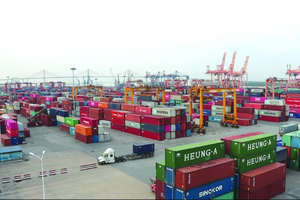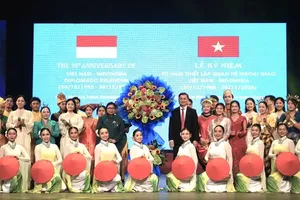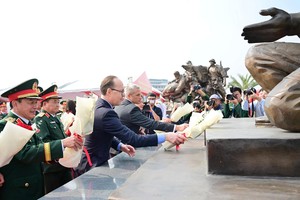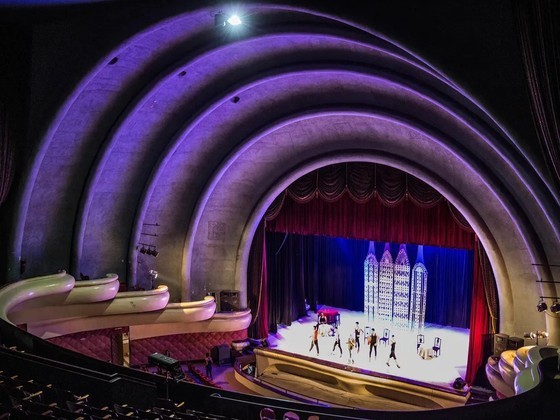 |
The Teatro America Theater |
In Havana alone, there are numerous famous architectural works acknowledged by the United Nations Educational, Scientific and Cultural Organization (UNESCO) and diligently safeguarded by Cuban authorities.
Havana boasts numerous artistic-style villas and modern hotels from the mid-20th century. Alongside them are grand Soviet-era architectures like the Russian Embassy, built in 1985. These architectures span from colonial times to the present day, showcasing a unique blend that Cuban architect Miguel Coyula has described as the "last virgin city" in the world.
One of the most fascinating architectural landmarks in Havana is the Teatro America Theater. It is like a hidden gem concealed behind the dull, gray, polygonal concrete facade on Galiano Street. Few cities in the world possess such concealed beauty. Another remarkable example of artistic decor is the Maternity Hospital, constructed in 1940. The exquisite Teatro Sierra Maestra Cinema, situated in the suburban area of Rancho Boyeros, is adorned with artistic touches and showcases interior designs inspired by Mayan patterns.
Along Calzada del Cerro, a meandering district leading to Old Havana, every house front is embellished with porches, corridors, or archways, forming a continuous shaded path spanning approximately 2 kilometers. Wandering through the streets of Havana feels like exploring a place brimming with vibrant colors, captivating scents, rich culture, and a storied history. Local residents peer out from their balconies onto the city square, and groups of friends gather at Cafe El Escorial, sipping coffee while admiring the lively, colorful buildings around them.
Havana is home to some of the most unique architecture in the world. Its earliest architecture reflects medieval Spanish styles, but Havana has gone through the Renaissance, with architecture over time combining Spanish styles with Greek, Italian, and Roman ones scattered throughout the city. These influences have turned Havana into the diverse place it is today. Yoani, a student at the University of Havana, expresses her love for the uniqueness of her city and takes great pride in Havana and its history.
One of the most densely populated areas in Havana is the Malecon, also known as the Malecon Seawall. According to Lonely Planet Cuba, the Malecon stretches for 8 kilometers along the coast of Havana and stands as one of the city's busiest streets. On the opposite side of the Malecon, there is an array of diverse buildings and a row of upscale complexes. As the sun dips below the horizon, the street springs to life. After a long, scorching day, hundreds of people gather at the Malecon to socialize and unwind. Instead of gazing out at the open sea, people turn their attention toward the city. Street musicians walk along the seawall, strumming guitars and beating drums for the onlookers, their music resonating throughout the crowd. Along the sidewalk, people try to negotiate with taxi drivers, hoping to secure a ride to Old Havana.
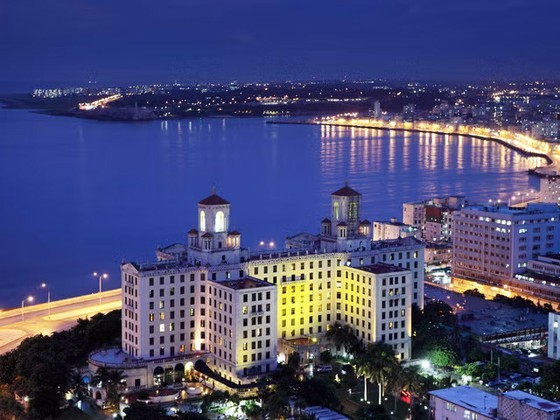 |
The Malecon Seawall |
Despite the short distance separating Malecon and Old Havana, the atmospheres are markedly different. While Malecon exudes tranquility, a walk through Old Havana feels like strolling through Disneyland. Each area of the city boasts its unique style. Old Havana features five distinct squares: Plaza de Armas, Plaza Vieja, Plaza de San Francisco, Plaza del Cristo, and Plaza de la Catedral, each offering its own fresh and exciting things.
Plaza Vieja always carries the ambiance of musical rhythms and culture. If someone wants to have an enjoyable evening where they can socialize and enjoy one or two performances, Plaza Vieja is the ideal place.
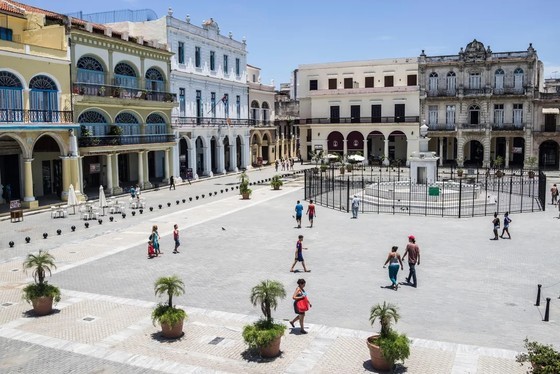 |
Plaza Vieja Square, one of the oldest architectural works in Havana |
For a more profound insight into the daily life of the Cuban people, you do not have to search far beyond Plaza de la Catedral, where groups of young individuals donned in sports jerseys engage in hours-long soccer matches. Buildings loom from both sides of the narrow streets, with clothes hanging from apartment balconies. Local residents gaze from their balconies as tourists pass by. The contrast in colors between the shops and the apartments is strikingly evident.
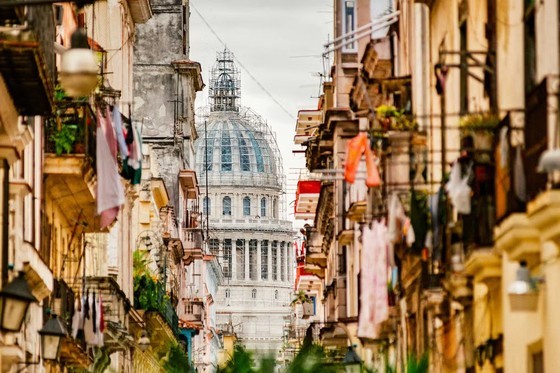 |
Architecture of the center of Havana |
Local artists also contribute their talents to beautify the city through images painted on walls. People do not have to visit an art gallery when they can simply stroll along the streets of Old Havana to savor the flavors of art and culture.
Art can also be a way to revitalize the deteriorating architecture of Old Havana. In 1992, Cuban ceramic artist Jose Fuster made the decision to turn his home into a sophisticated piece of art. He adorned his entire house, now called Taller-Estudio Jose Fuster, with mosaic tiles from the foundation to the roof. His residence has since become the focal point of Fusterlandia.
Fusterlandia is like a playground, with spiral staircases to ascend, creating a maze-like experience, pathways to wander, and rooftops to admire an entire realm of artistic creativity. Fuster's residence is just the beginning of the Fusterlandia project. He embarked on this project as a way to blend his imagination with the real world, and it expanded from there. As though Fuster's artistic spirit could not be contained, his project started spreading throughout the surrounding area.
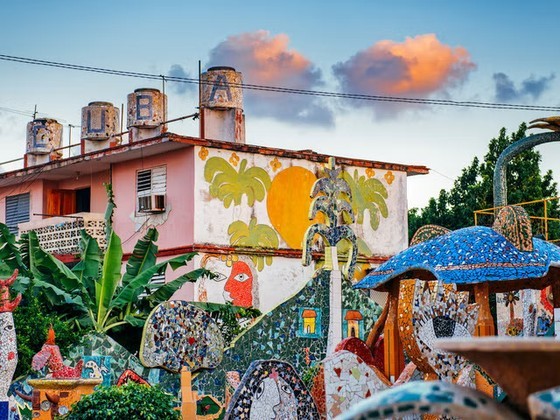 |
The Fusterlandia-style buildings |
According to Lonely Planet Cuba, more than half of the houses in the Jaimanitas neighborhood, with the owners' consent, have become an integral part of Fusterlandia. What initially started as Fuster's personal project has since evolved into a collaborative community endeavor. Neighbors, friends, and visitors have all channeled their creativity into this initiative. The entrance to Fusterlandia is graced with walls adorned with paintings by contributors, creating an ambiance reminiscent of an art exhibition. The mural paintings on these walls beautifully illustrate the culture and history of Cuba, embellishing the wall adjacent to the tile-roofed bus stop. Even the street signs are unique artistic creations.
Fuster has no plans to stop and continues to seek inspiration, as well as gather resources to expand Fusterlandia. Fusterlandia is not just a center for showcasing art but also a pioneer in strengthening architecture.
The historic sites of Old Havana remain safe thanks to UNESCO protection, but efforts to fortify the infrastructure are still underway for the Cuban people. Havana has a lot of beautiful villas, but there are also deteriorated houses in need of extensive maintenance. Solid and luxurious buildings are now just piles of rubble due to tropical storms. With the help of organizations like UNESCO and the increasing number of tourists from the US, there is great hope for the preservation of Cuban architecture.










